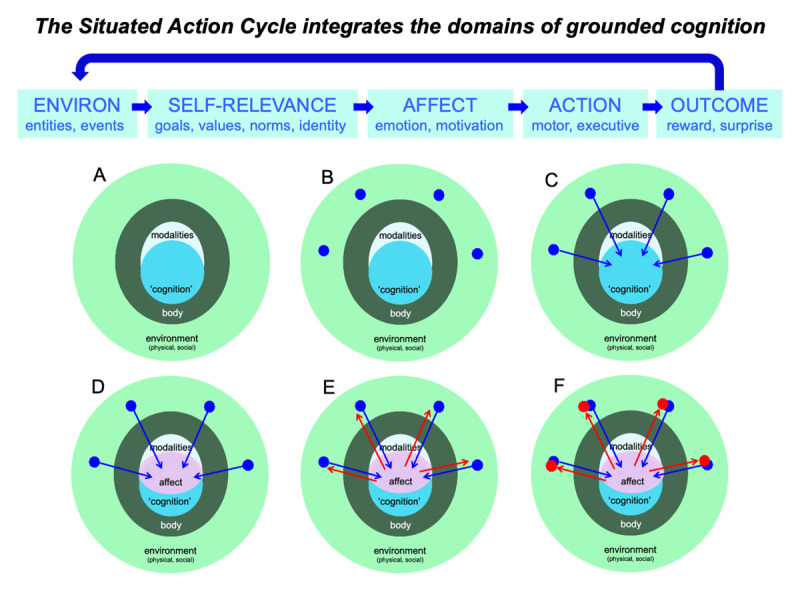Figure 3.

Illustration of how the Situated Action Cycle integrates the domains of grounded cognition. Panel A illustrates the five domains that underlie cognition in Figure 1: classic cognitive mechanisms (blue), the modalities (grey), the body (dark green), the physical and social environments (light green). Panel B illustrates the appearance of entities and events during the environmental phase of the cycle. Panel C illustrates perception of these entities and events via the modalities during the self-relevance phase, together with establishing their implications for the agent’s goals, values, identity, norms, etc. via cognitive processing. Panel D illustrates the resultant activation of emotion and motivation during the affect phase, often heavily expressed in the body. Panel E illustrates the production of behavior in the environment during the action phase, often resulting from emotion and motivation. Panel F illustrates the results of action during the outcome phase, including reward and assessments of prediction accuracy. As this figure illustrates overall, the Situated Action Cycle integrates the domains of grounded cognition, suggesting that these domains are important because, together, they implement the elements of situated action.
